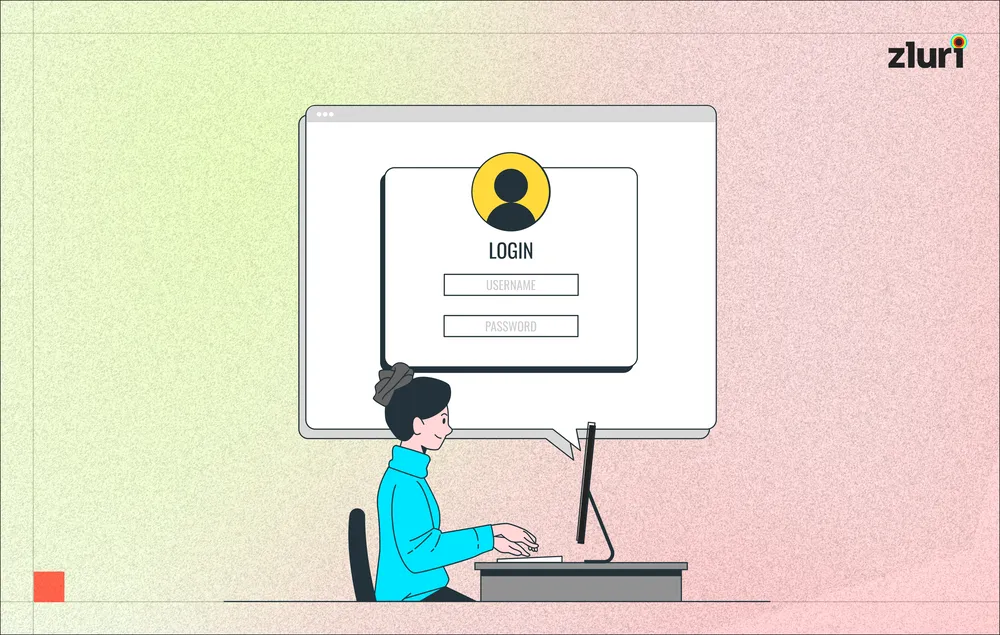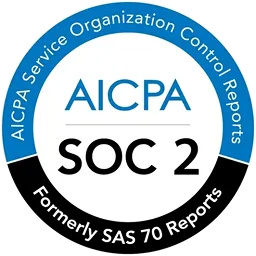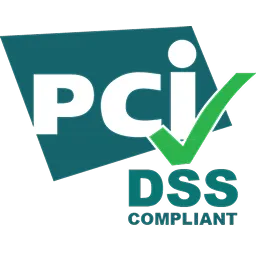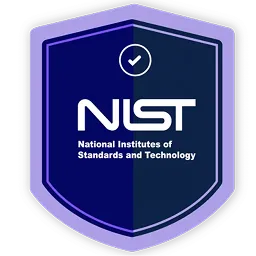Third-party risk management is increasingly critical for any organization's data security. These risks stem from third-party vendors, contractors, and business partners who have access to your data and systems. Third-party security is a set of practices that can identify these risks and protect your organization from security threats associated with any third-party entity.
With the escalating reliance on third-party vendors for diverse services, effectively managing the security risks associated with these external partners becomes imperative. Protecting sensitive information is essential, even when it operates beyond your direct oversight. This task is particularly daunting due to each third-party vendor's distinct security protocols, complicating efforts to maintain consistent security measures across the spectrum.
Third-party security emerges as a pivotal solution for surmounting this challenge. It offers a standardized framework for evaluating and addressing the security risks inherent in vendor relationships.
By integrating third-party security measures, you can attain heightened visibility into your vendors' security practices, ensuring alignment with your company's security standards. This proactive approach helps mitigate potential third-party risks. It also streamlines the intricacies of vendor management, fostering a more secure and resilient ecosystem for your organization.
Now, let’s explore the various third-party risks that can expose your organization to regulatory, financial, legal, and reputational damages.
6 Types of Third-party Risks to be Considered

Here are the key risks you need to consider:
1. Cybersecurity Risk: This is one of the most significant concerns. Third-party vendors can be targets for cyberattacks, and if their security measures are weak, your company's data could be compromised. Ensuring vendors have strong cybersecurity protocols is essential to protecting sensitive information.
For instance, if a third-party vendor that manages your customer data is hacked, the breach could expose sensitive information, such as personal details and credit card numbers. This compromises your data and can lead to significant customer trust issues. Ensuring vendors have robust cybersecurity measures is essential to prevent such incidents.
2. Operational Risk: Dependence on third-party vendors can expose your company to operational disruptions. For example, if you rely on a vendor for cloud services and they experience a major outage, your company's access to critical applications and data could be interrupted.
This can halt your business operations and lead to lost productivity and revenue. Evaluating vendors for reliability and having contingency plans in place can mitigate this risk.
3. Legal and Compliance Risk: Working with third parties can introduce legal and compliance challenges. Different vendors may be subject to different regulations, and failing to comply with these can lead to legal penalties for your company. Ensure that your vendors adhere to relevant regulations to avoid any compliance issues.
For instance, if your vendor handling your EU customer data does not comply with GDPR, your company could face hefty fines. Ensuring your vendors comply with relevant laws and industry standards is crucial to avoid legal penalties.
4. Reputational Risk: Your vendors' actions can impact your company's reputation. If a vendor fails to meet security standards or engages in unethical practices, it can reflect poorly on your business. Maintaining strong oversight of your vendors' practices helps protect your company's good name.
Imagine if a vendor involved in your supply chain uses unethical labor practices, and this information becomes public. Your company could be associated with these practices, damaging your reputation. Regularly monitoring and auditing your vendors' practices helps protect your company's image.
5. Financial Risk: A third-party vendor's financial instability can pose a significant risk. If a vendor goes out of business, it can lead to service disruptions and financial losses for your company. Evaluating the financial health of vendors before entering into agreements is crucial to mitigate this risk.
For example, if a key vendor providing essential software goes bankrupt, it could disrupt your services and force you to find an alternative solution quickly, potentially at a higher cost. Assessing the financial health of vendors before engaging with them is crucial to avoid such scenarios.
6.Strategic Risk: Lastly, strategic risk involves aligning your vendor's goals with your company's long-term objectives. If a vendor's direction or priorities change, it can affect your strategic plans. Regularly reviewing and ensuring alignment with your vendors can help maintain a cohesive strategy.
For instance, if a vendor decides to pivot its business model in a way that no longer supports its strategic needs, it can create gaps in its service offerings. Regularly reviewing and ensuring alignment with your vendors' strategic direction can help maintain a cohesive business strategy.
Addressing these risks requires a comprehensive approach to third-party or vendor management. You can ensure a more secure and stable partnership with your third-party vendors by assessing and mitigating these potential risks. For this reason, you need to implement successful third-party security.
Strategies to Implement for Strengthening Your Third-Party Security

Now, we will discuss the several strategies to implement an effective third-party security.
1. Identify third-party risks
Identifying third-party risks is a crucial strategy for implementing effective third-party security. You understand that third-party vendors often have access to your company's sensitive data and systems. Therefore, assessing and managing the risks associated with these vendors is essential to protect your organization from potential security breaches, operational disruptions, and compliance issues.
How to Conduct a Risk Assessment for Identifying Third-Party Risks:
- Identify All Third-Party Relationships: List all the vendors and third parties your company works with. This includes service providers, contractors, and any other external entities accessing your systems or data.
- Classify Vendors by Risk Level: Categorize vendors based on the data type they handle and the criticality of their services. For example, vendors managing sensitive customer data or essential business functions should be classified as high-risk.
- Gather Security Information: Collect information about each vendor's security practices, policies, and compliance status. This can include security certifications, audit reports, and details on their incident history. Using questionnaires and direct interviews can help gather this information.
- Assess Security Controls: Evaluate the effectiveness of the vendor's security measures. Look at their encryption methods, access controls, incident response plans, and overall security infrastructure. Ensure these controls align with your organization's security standards.
- Evaluate Compliance: Verify that the vendor complies with relevant regulations and standards. Check for adherence to laws like GDPR, HIPAA, or industry-specific requirements. Certifications and audit reports can confirm this.
- Determine Risk Levels: Assign each vendor a risk level based on the information collected. Use a risk matrix to assess the likelihood of a security incident and its potential impact on your organization. Vendors handling critical data with weak security measures should be rated as high-risk.
- Develop Mitigation Strategies: For high-risk vendors, create and implement strategies to mitigate these risks. This might include requiring enhanced security measures, conducting regular audits, or even reconsidering the partnership if the risks are too high.
- Monitor and Review Regularly: Continuously monitor and review the risk levels of third-party vendors. Regular updates ensure that any vendor security posture changes or compliance status are promptly identified and addressed.
Key Indicators for Identifying Third-Party Risks:
- Data Sensitivity: Vendors handling sensitive data, such as customer information or financial records, pose higher risks.
- Security Incidents: A history of security breaches or incidents indicates a higher risk level. Vendors with poor incident management may not be adequately protecting your data.
- Compliance Status: Non-compliance with relevant regulations and standards is a significant risk indicator. Ensure vendors comply with industry-specific requirements like GDPR or HIPAA.
- Security Controls: Weak or outdated security controls are a red flag. Evaluate the vendor's encryption methods, access controls, and overall security infrastructure.
- Financial Stability: Financial instability can impact a vendor's ability to maintain robust security measures. Assess the vendor's financial health to ensure they can sustain their security practices.
- Vendor Dependencies: Vendors relying heavily on subcontractors or other third parties can increase risk. Additional layers of third-party relationships add complexity and potential vulnerabilities.
- Geographical Location: Vendors operating in regions with weak data protection laws or high levels of cybercrime pose higher risks. Consider the regulatory environment and threat landscape of the vendor's location.
2: Conduct due diligence before signing contracts
Conducting due diligence before signing contracts with third-party vendors is crucial for implementing effective third-party security. This process helps ensure that vendors meet your company's security standards and mitigate potential risks before they can impact your business.
How Conducting Due Diligence Before Signing a Contract Helps:
- Establishing Contractual Requirements: Due diligence involves defining and documenting security requirements in the vendor contract. This includes specifying security protocols, compliance standards, and incident response procedures. By clearly outlining these requirements, you set expectations and ensure that the vendor is legally obligated to meet your security standards.
Example: If your company handles sensitive customer data, the contract should mandate that the vendor use encryption for data storage and transmission, implement regular security audits, and comply with relevant regulations like GDPR or HIPAA.
- Verifying Security Practices: Due diligence allows you to assess a vendor's security practices before entering into a partnership. This involves reviewing their security policies, procedures, and past performance in handling security incidents. By understanding their security posture, you can make informed decisions about whether they are a suitable partner.
Example: Requesting a vendor's security certifications, such as ISO 27001, and reviewing their history of data breaches or security incidents can provide insights into their commitment to security. - Auditing Process: An essential part of due diligence is the auditing process. This involves conducting regular audits of the vendor's security practices to ensure ongoing compliance with the contractual requirements. Audits help identify any deviations from agreed-upon security standards and allow for timely remediation of any issues.
What's Included in the Auditing Process:
- Security Controls Review: Assessing the vendor's security controls, such as firewalls, encryption methods, and access controls, to ensure they are effective and up-to-date.
- Compliance Checks: Verifying that the vendor adheres to relevant regulations and industry standards. This includes checking for compliance with GDPR, HIPAA, or other applicable laws.
- Incident Response Evaluation: This involves reviewing the vendor's incident response plans and their effectiveness in handling security breaches. It also includes assessing their ability to detect, respond to, and recover from incidents.
- Regular Reporting: The vendor must provide regular security reports and audit results. This helps maintain transparency and promptly identifies and addresses any potential issues.
- On-Site Inspections: Conduct on-site inspections of the vendor's facilities to verify that their physical security measures and operational practices align with the agreed-upon standards.
3. Integrate third-party security into vendor contracts
Integrating third-party security into vendors' contracts is the second step for implementing effective third-party security. This process ensures that security requirements and expectations are clearly outlined and enforced throughout the partnership. It will minimize the risk of security breaches and protect your company's data.
The below-mentioned should be taken into consideration while integrating third-party security into your vendor contract:
- Define Security Requirements: Clearly outline the security requirements and standards that vendors must adhere to in the contract. This includes encryption protocols, access controls, data handling procedures, and incident response plans.
- Specify Compliance Obligations: Include clauses that require vendors to comply with relevant laws, regulations, and industry standards, such as GDPR, HIPAA, or PCI DSS. Specify the consequences of non-compliance and outline procedures for regular compliance audits.
- Establish Incident Reporting Procedures: Define procedures for promptly reporting security incidents, breaches, or vulnerabilities. This includes notification timelines, escalation paths, and collaboration with your company's internal security team.
- Enforce Data Protection Measures: Specify measures to protect sensitive data, including encryption, data masking, and access controls. Outline data segregation, storage, and transmission requirements to ensure data integrity and confidentiality.
- Include Security Audits and Assessments: Incorporate clauses that allow your company to conduct regular security audits and assessments of the vendor's systems and processes. Define these audits' scope, frequency, and reporting requirements to ensure ongoing compliance and security.
- Define Remediation Procedures: Outline procedures for addressing security vulnerabilities, breaches, or non-compliance issues identified during audits or assessments. Define responsibilities for remediation efforts and establish timelines for resolution.
4: Define responsibilities, rules, and decision criteria
Defining responsibilities, rules, and decision criteria is crucial for implementing effective third-party security. This process establishes clear guidelines for all stakeholders involved in the vendor relationship. It ensures that everyone understands their role in maintaining security and mitigating risks.
Let's delve into why this step is essential and how it can be beneficial:
- Ensuring Clarity and Accountability: By clearly defining responsibilities, rules, and decision criteria, you can ensure that each party understands their role in upholding security standards.
For example, specifying who is responsible for implementing security measures, conducting regular audits, and addressing security incidents helps avoid confusion and ensures accountability. This clarity fosters a proactive approach to security management, where everyone knows what is expected of them. - Promoting Consistency and Compliance: Defining responsibilities, rules, and decision criteria helps ensure consistency in security practices and compliance with relevant laws and regulations. You can minimize the risk of security gaps or non-compliance issues by outlining specific requirements and expectations in the vendor contract. This promotes a culture of security awareness and ensures that security measures are consistently applied across all vendor relationships.
- Enhancing Risk Management: Clearly defined responsibilities, rules, and decision criteria are essential for effective risk management. By establishing guidelines for assessing and mitigating security risks, you can identify potential vulnerabilities and implement appropriate controls to reduce the likelihood and impact of security incidents.
This proactive approach helps safeguard the company's data and reputation against emerging threats and vulnerabilities.
5: Continuously monitor and assess vulnerabilities
Monitoring and assessing vulnerabilities in third-party relationships is crucial for maintaining a strong security posture. This proactive approach ensures that any weaknesses or potential threats are identified and addressed before they can be exploited. By regularly evaluating these vulnerabilities, you can safeguard your company’s sensitive information and maintain the trust of your clients.
One key aspect of this strategy is ensuring proper encryption standards are in place. Encryption transforms your data into a secure format that can only be read by someone with the correct decryption key.
When third-party vendors use strong encryption methods, it adds a critical layer of security that protects your data from unauthorized access. Regularly verifying that your partners adhere to these standards helps prevent data breaches and unauthorized data exposure.
Additionally, continuous monitoring helps ensure that data protection measures are being implemented effectively. This involves checking that vendors comply with relevant regulations and best practices for data security.
Doing so lets you be confident that your partners are taking the necessary steps to protect your information. This reduces the risk of data loss or theft and helps your company avoid costly fines and reputational damage associated with data breaches.
Furthermore, by adopting a continuous monitoring and assessment strategy, you create a culture of security awareness within your organization and among your partners. This ongoing vigilance encourages everyone involved to prioritize security and stay updated with the latest threats and technologies. It fosters a collaborative environment where security is a shared responsibility, leading to more robust defenses against cyber threats.
6: Define the vendor’s offboarding process
Having a clear offboarding process when working with third-party vendors is essential for maintaining your company’s security. This helps protect your sensitive data and ensures your systems remain secure even after the partnership ends. By setting specific steps for vendors to follow when the relationship concludes, you can prevent potential security risks arising from poorly managed offboarding.
One of the most important aspects of a vendor offboarding process is requiring vendors to destroy or delete all data they have collected or used during the partnership. This step ensures that no residual data is left behind, which could be vulnerable to unauthorized access or misuse. This will also reduce the risk of data breaches and protect your company’s confidential information.
In addition, it is crucial to revoke any privileges or access that the vendor had to your systems. This means disabling user accounts, removing access to your networks, and ensuring that any permissions granted during the partnership are fully rescinded. By doing this, you ensure that former vendors cannot access your systems or data, which helps prevent potential security threats from lingering after the relationship ends.
Implementing a defined offboarding process also promotes accountability and transparency. When both parties understand the steps that need to be taken, there are fewer chances of misunderstandings or oversights.
This clarity helps ensure that all security measures are followed and that your data remains protected throughout the transition. It also demonstrates to stakeholders and clients that your company takes security seriously and has robust procedures in place to manage third-party relationships responsibly.
Moreover, a well-structured offboarding process can help streamline the transition to new vendors. By clearly outlining the steps and requirements for offboarding, you can ensure a smoother handover of responsibilities and data. This minimizes disruptions and maintains continuity in your operations while keeping your security measures intact.
Choose a Suitable Solution to Enhance Third Party Security
Your organization relies heavily on external vendors and partners for various services, introducing new risks and vulnerabilities. Thus, choosing the right solution to manage these third-party relationships is crucial to protecting your company's sensitive data and maintaining a strong security posture.
Numerous solutions are available in the market for managing third-party security, each with its own set of features and benefits. However, not all solutions are created equal. Finding a suitable solution that aligns with your organization's specific needs and provides comprehensive protection against potential threats is essential.
One such solution is Zluri, offering a SaaS management platform. Zluri offers a comprehensive approach to vendor management and its security, ensuring that your organization can effectively monitor and manage the risks associated with external vendors. Let's see how.
- Efficient Vendor Access Management
Managing vendor access is crucial for maintaining security. Zluri simplifies this process by allowing you to grant access and securely deprovision vendors as per their tasks.
For instance, imagine you have a marketing agency that has completed its contract. With Zluri, you can quickly revoke their access to your internal systems, ensuring they no longer have access to sensitive information. This reduces the risk of former vendors exploiting their previous access.

- Effective Renewal and Termination Policies
Another key aspect of third-party security is effectively managing vendor contracts. Zluri helps you keep track of renewal and termination dates, ensuring you can make timely decisions about your vendor relationships.
For instance, if you have a vendor contract approaching its renewal date, Zluri will alert you in advance. This allows you to review their performance and security posture before renewing or terminating the contract. Having this information at your fingertips ensures you are not caught off guard by expiring contracts and can maintain control over your vendor ecosystem.

- Real-Time Threat and Risk Insights
Zluri provides real-time threat and risk insights, allowing you to avoid potential security issues. The platform monitors vendor activities and alerts you to unusual or suspicious behavior.
For example, if your vendor's account starts accessing data outside of normal business hours, Zluri will flag this activity. This enables you to investigate and address potential threats before they escalate, ensuring your data remains secure.
- Detailed Security and Compliance Data
Understanding each vendor's security and compliance status is essential for protecting your organization. Zluri offers each vendor detailed security and compliance data, helping you assess their adherence to your standards and regulatory requirements.
For example, if you are working with a new payment processor, Zluri can provide information about their compliance with PCI DSS standards. This helps you ensure that all your vendors meet necessary security and compliance criteria, reducing the risk of data breaches and regulatory fines.
By choosing Zluri, you can ensure that your vendor relationships are secure and that your sensitive data remains protected. Book a demo today to learn more!
Frequently Asked Questions (FAQs)
1: What is a third-party security assessment?
A third-party security assessment involves an in-depth audit conducted by an independent security firm. The firm examines all code, documentation, and processes related to a software system. The assessment aims to identify potential security risks so that the software developer can address and resolve these vulnerabilities.
2: What is included in a third-party security assessment report?
The Security Assessment Report should detail the audit checks performed, noting which checks passed and which failed. It should also provide a final summary list of the vulnerabilities identified by the evaluation team.
3: What is included in a third-party cyber security audit?
Common areas assessed in a third-party cyber security audit include compliance requirements, data storage, transmission, protection systems for sensitive information, and education and training programs.
4: What is third-party information security management?
Third-party security encompasses practices, services, and technologies designed to identify and mitigate risks from third-party vendors, protecting your organization from related security threats. Managing these third-party risks is now crucial to any organization's third-party information security strategy.






.png)


.svg)














